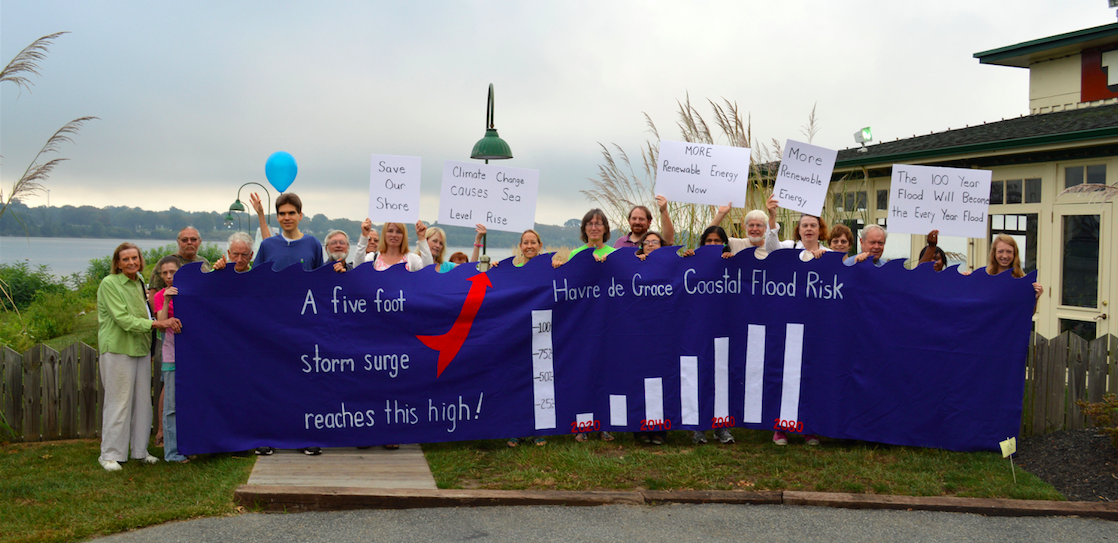The Federal Energy Regulatory Commission’s flawed analysis of the Atlantic Coast Pipeline fails the public and the environment.
An analysis of environmental impacts for the proposed Atlantic Coast Pipeline is completely inadequate and falls far short of legal requirements. This is the overwhelming consensus of thousands of comments filed this week with the Federal Energy Regulatory Commission (FERC). The agency had issued on December 30 a Draft Environmental Impact Statement (DEIS) on the proposed 600-mile natural gas pipeline that would go from central West Virginia, through Virginia and terminate in southern North Carolina. April 6 is the deadline for public comments.
“FERC’s inability to provide a sound analysis of this project is a violation of the National Environmental Policy Act,” said Lewis Freeman, Chair and Executive Director of the Alleghany-Blue Ridge Alliance, a coalition of 51-organizations opposing the project. “What’s more, the Commission is poised to make a decision that will reverberate for decades based on inadequate information.”
The shortcomings of the DEIS are considerable because of its failure to:
- Assess the true market demand for natural gas in the region of the proposed pipeline;
- Take a hard look at the effects the proposed route planned through predominantly minority and low-income neighborhoods would have on communities;
- Consider the devastation to mountaintops construction would have across steep, forested Appalachian ridges;
- Provide adequate environmental information. The DEIS lacks sufficient information about the ACP and its potential environmental impacts on a wide variety of resources, including water resources, wetlands, cultural resources, threatened and endangered species and climate change implications; and
- Identify, consider, and analyze all reasonable alternatives.
“The federal government is glossing over the massive impacts this 600-mile pipeline would have on neighboring communities and climate change,” said Alison Kelly, an attorney for the Natural Resources Defense Council. Greenlighting this pipeline without a sufficient review of the damage it would cause is a disservice to the people who life in its path and treasure this part of Appalachia.”
Greg Buppert, a senior attorney with the Southern Environmental Law Center, said: “FERC is only telling one side of the story, and that story fails to answer the critical threshold question – is this project even necessary?” Buppert points out that recent energy demand forecasts have cast serious doubt on the need for the ACP. Furthermore, two-thirds of new generating capacity being added in the United States is based on renewable sources, not natural gas. Building the ACP would be contrary to the future growth of the electric utility industry.
“ACP refused to do the necessary impact analysis, so we have had to hire engineers to find out what will actually happen,” said Ben Luckett, a senior attorney with Appalachian Mountain Advocates. “We’ve learned the pipeline would create millions of cubic yards of excess dirt and rock for which ACP has no disposal plan and will level many of our scenic ridgetops, much like a mountaintop removal coal mine. We fear the most likely resting place for all of that construction spoil will be in our rivers, lakes, and streams. It is truly a slap in the face to hear FERC dismiss these impacts as ‘insignificant’ or, worse yet, to see that they have failed to analyze them at all.”
“The Atlantic Coast Pipeline environmental review failed to adequately address the threats it poses to our communities and our environment. This dirty and dangerous pipeline creates concern for significant risks of adverse impacts due to the nature of the terrain that the line would cross. Based on multiple unresolved environmental issues and potential hazards, and the magnitude of this project, FERC must reject the application. The stakes are very high and the risks are far too great,” said Kirk Bowers, Virginia Chapter, Sierra Club.
Anne Havemann, Senior Counsel at the Chesapeake Climate Action Network, said: “The Atlantic Coast Pipeline would be a disaster for the climate. It will trigger a massive new wave of fracking, bringing climate pollution equivalent to 20 new coal-fired power plants. FERC’s own former chairman Norman Bay said that the agency should reconsider how it analyzes environmental impacts of pipelines like ACP, including analyzing lifecycle climate emissions. FERC should heed his advice and revise its analysis, or reject the pipeline.”
Peter Anderson, Virginia Program Manager for Appalachian Voices, noted: “A couple of months ago, the former Chairman of FERC raised significant doubts that the agency adequately analyzes pipeline need and climate impacts. This draft environmental impact statement is no different. FERC should rescind this DEIS and start over, this time with final route proposals, completed surveys, climate analysis that accounts for the entire life cycle, and a critical analysis of market demand and alternatives.”
“We know that projects like these are invariably placed near communities of low-income, people of color, or the elderly. In usual fashion, the ACP places a heavy burden on the poor and elderly, perhaps by design. These folks may not have the energy, stamina, and resources to fight, and that’s what these companies are banking on. This is an example of outside interests that plan to use our resources and toxify our land for their own benefit. It’s an old story that continues to play out the same way, despite the best efforts of local people to change our energy landscape,” said April Pierson-Keating Mountain Lakes Preservation Alliance, Upshur County, WV.
# # #
Contacts:
Lewis Freeman, Allegheny-Blue Ridge Alliance, 703-298-8107, lewfreeman@gmail.com
Greg Buppert, Southern Environmental Law Center, 434-977-4090, gbuppert@selcva.org
Ben Luckett, Appalachian Mountain Advocates, 404-645-0125, bluckett@appalmad.org








 turbines and placards demanding a clean energy future for Maryland. Lawyer’s Mall was crowded with legislative champions Senators Feldman and Madaleno along with labor, civil rights, health and faith voices. Trisha Sheehan, of Mom’s Clean Air Force stated, “Children are among the most vulnerable to climate change, especially from extreme heat events, widespread disease and increased air pollution. Maryland has the ability to double its use of clean energy by 2025. We need to act now to cut our reliance on the dirty fossil fuels that are polluting our air and making us sick.”
turbines and placards demanding a clean energy future for Maryland. Lawyer’s Mall was crowded with legislative champions Senators Feldman and Madaleno along with labor, civil rights, health and faith voices. Trisha Sheehan, of Mom’s Clean Air Force stated, “Children are among the most vulnerable to climate change, especially from extreme heat events, widespread disease and increased air pollution. Maryland has the ability to double its use of clean energy by 2025. We need to act now to cut our reliance on the dirty fossil fuels that are polluting our air and making us sick.”









